You are interested in Judo…great! Maybe you have a friend who trains in Judo or you have seen it on TV or even seen it used in MMA. Now you want to know more about it and see what Judo is all about. We will breakdown what Judo can teach you and give you some insights into the great sport.
What does Judo teach you? Judo teaches you how to control and dominate your opponent through the use of takedowns, pins and submissions. Judo teaches you how to defend yourself in a combat situation. Judo is a tough sport and therefore teaches you discipline and mental and physical strength.
Judo is a grappling based martial art which was founded by Jigoro Kano in 1882 in Japan. Kano wanted to create a martial art that could be effective as self defense while also being a sport that could be practiced safely. Kano viewed Judo as more than a physical pursuit and wanted Judo to be a medium by which a person could improve their temperament and mental capacity and strength.
What Do You Learn In Judo?
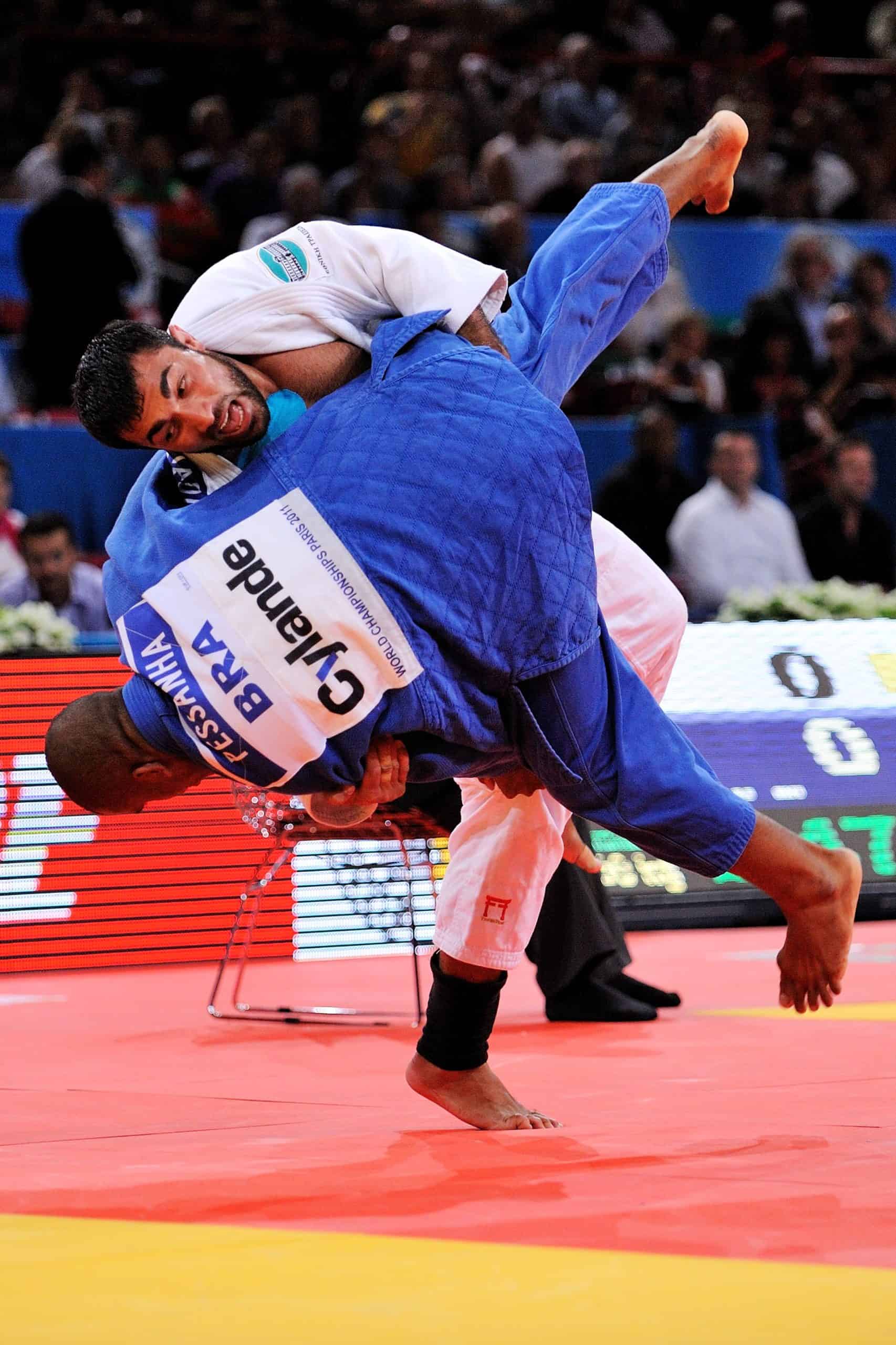
What do you learn in Judo? In Judo you learn throwing techniques (Nage-waza), pinning and submission techniques (Katame-waza) and in some traditional schools striking techniques (Ate-waza).
Nage-waza are classified as standing throws (Tachi-waza) or sacrifice throws (Sutemi-waza) where an athlete throws themselves on the ground to takedown their opponent. An example of a sacrifice throw is Sumi gaeshi.
Standing throws are classified as hand techniques (Te-waza), leg techniques (Ashi-waza) 0r hip techniques (Koshi-waza).
Sacrifice throws are classified as front throws (Ma sutemi-waza) or side throws (yoko sutemi-waza). Judo throws require the use of arms, legs and hips however the name is based on which part of the body is most important in performing the technique.
The most common throws in Judo are Uchi-mata, Ippon Seoi Nage, Eri Seoi Nage and Sode Tsuri Komi Goshi.
Grappling techniques are made up of pins, chokes, joint locks and reversals which are used to control your opponent and end the fight. Grappling techniques are classified into pins (Osae-waza), chokes (Shime-waza) and joint lock submissions (Kansetsu-waza).
Striking techniques are not allowed in Judo competitions and are rarely taught at most Judo schools. However they are still apart of the official Judo curriculum. Ate-waza is still taught within Kata and self defense.
Striking techniques are classified as arm striking techniques (Ude-Ate-waza)
or leg striking techniques (Ashi-Ate-waza).
Here is a list of some of the most popular Judo striking techniques:
- Empi-uchi: Elbow blow
- Kami-ate: Upward blow
- Kirioroshi: Downward knife hand blow
- Naname-ate: Front crossing blow
- Naname-uchi: Slanting knife hand blow
- Ryogan-tsuki: throat strike – Strike both eyes with fingertips
- Shimo-tsuki: Downward blow
- Tsukiage: Uppercut
- Tsukidashi: Stomach punch with fingertips
- Tsukkake: Straight punch
- Uchioroshi: Downward strike
- Ushiro-ate: Rear elbow strike
- Ushiro-sumi-tsuki: Rear corner blow
- Ushiro-tsuki: Rear blow
- Ushiro-uchi: Rear blow
- Yoko-ate: Side blow
- Yoko-uchi: Side blow
- Mae-ate: Front knee
- Mae-geri: Front kick
- Naname-geri: Roundhouse kick
- Taka-geri: High Front kick
- Ushiro-geri: Backward kick
- Yoko-geri: Side kick
Judo also has parrying and blocking techniques (Uke-waza) which are designed to neutralize the aforementioned striking techniques.
Is Judo Dangerous To Learn?
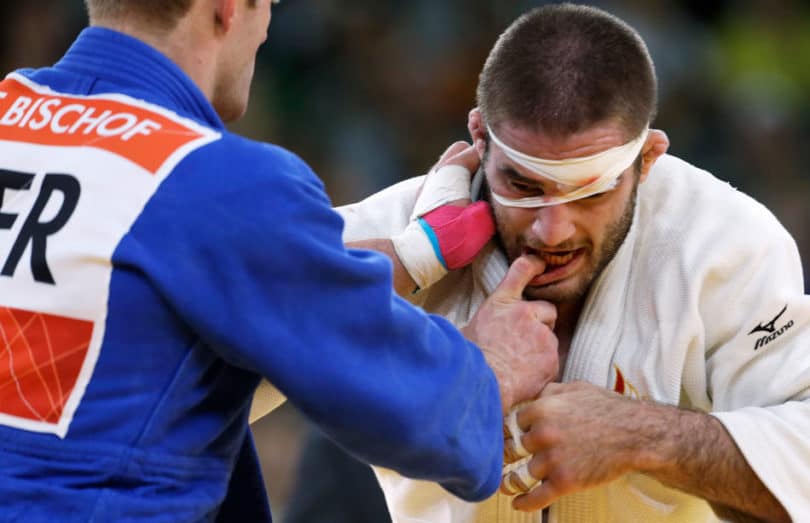
Is Judo dangerous to learn? No, Judo is not dangerous to learn. Judo is one of the safest contact martial arts in terms of injury rates (39.8/1,000 athlete-exposures). Judo techniques have been designed to be performed safely. Judo places a large emphasis on safety with training occurring on soft mats and frequent practice in falling safely.
The French Judo Federation documented the frequency and type of injuries during Judo competitions from 1993 to 2014. 1.1% of athletes suffered an injury based on the results of 421,670 matches and the occurrence of 3511 injuries in 316,203 athletes. The most common injuries were sprains (54.3%), fractures (15.6%) and dislocations (12.5%).
How to avoid injuries in Judo? To avoid injuries in Judo you must warm up before training, use textbook technique, train with competent people, tap to submissions early and train under the watch of a skilled coach.
Does Judo Get You In Shape?
Does Judo get you in shape? Yes, Judo does get you in shape. An hour of Judo results in you burning between 500-700 calories. With the average Judo session last 2 hours you can expect to burn over 1000 calories every time you train. If you combine Judo with a healthy diet you will get in shape in no time.
To get in peak physical condition you should combine your Judo training with some other forms of exercise. Swimming, running and weightlifting are all great training modules that can be added to your Judo training to take your condition to the next level.
Can You Punch In Judo?
Can you punch in Judo? No, you can not punch in Judo. Even though Judo’s curriculum does include striking techniques such as punches (Ude Ate waza) when Judo became a sport all striking techniques were excluded from competition. Punches are rarely trained in Judo but can be found in Kata.
Does Judo Work In Real Life?
Does Judo work in real life? Yes, Judo works in real life. Judo not only looks cool at the Olympics or in John Wick movies. Judo can be used effectively in real life as all Judo techniques can be modified to be performed without the use of the Judogi. If someone has arms, legs or a head then they can be thrown.
Judo athletes practice their techniques against their training partners who are resisting 100%. They then compete in competitions against other athletes who are resisting 100%. Judo techniques which work against highly trained athletes who understand how to defend against them will absolutely work in real life against untrained people who do not know how to defend against them. A Judo throw can be devastating in real life as hitting your head on concrete or another hard surface can result in a concussion or a serious brain injury.
Here is an example of Judo being used in real life
Judo techniques do not need an opponent to be wearing a Judogi to work. You regularly see Judo techniques being performed in MMA where athletes do not have the ability to grip each others clothing.
Here is a highlight of Judo being used in MMA
Does Judo Help You Lose Weight?
Does Judo help you lose weight? Yes, Judo can help you lose weight. One hour of Judo forces your body to burn 500-700 calories. A typical Judo session lasts 2 hours meaning Judo will have you burning well over one thousand calories this will allow you to effortlessly achieve a calorie deficit and lose weight. As Judo is lots of fun you will be training all the time making your weight loss journey effortless.
To ensure you achieve your weight loss goals quickly and safely you need to match your intense Judo training with a nutritious well planned diet consisting of lots of fruit, vegetables and organic meat. If you show up to Judo practice consistently, train your butt off and then combine your training with a healthy diet you will be shredding the pounds and those abs will be visible sooner than you think.
Does Judo Build Muscle?
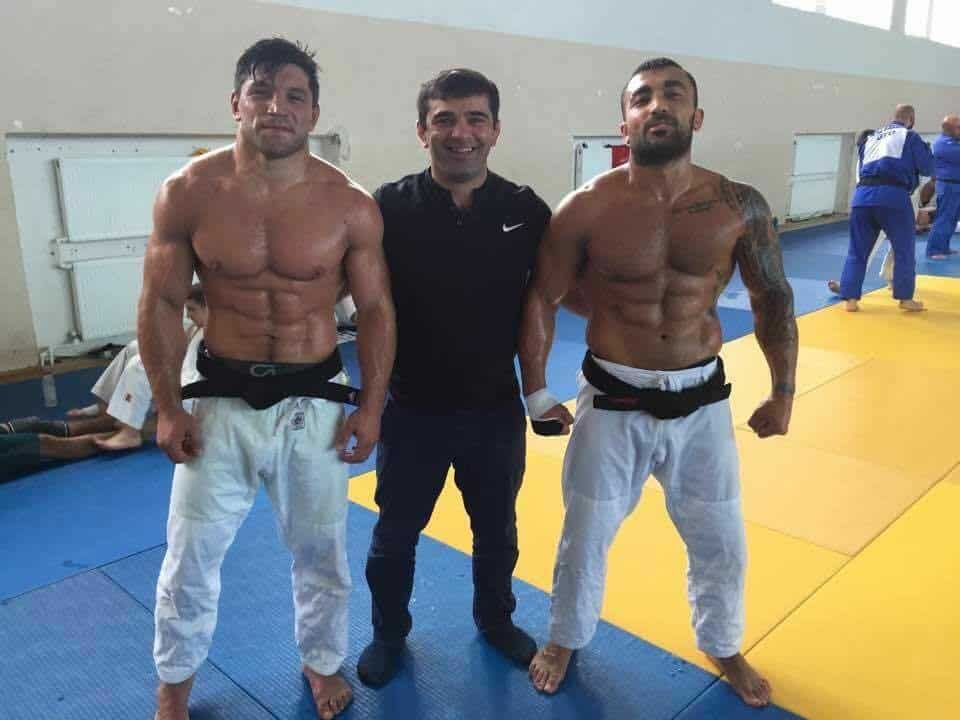
Does Judo build muscle? Yes, Judo does build muscle but it is not as effective at building muscle as weight training. Judo training will increase your legs, arms, shoulders, back and abs muscles. These are the major muscles which are used in Judo. To build the most muscle possible from Judo you need to match your training with ideal nutrition and rest.
Judo also has a toning effect on the body. Judo helps people reduce body fat and results in their muscles looking harder and sharper. Judo has a similar effect to calisthenics where the muscles appear more ripped with significantly more detail but not as large as someone who engages in a rigorous weight training routine.
If you want to optimize your muscle development from Judo you should incorporate a weightlifting program into your training. I recommend following a bodybuilding, powerlifting or kettlebell routine.
To increase your upper body strength you should do rope climbing and pull ups with all grips (pronated, supinated, neutral, wide, narrow, towel, rope, fatgrips, Gi) since in Judo your grip will most likely be the limiting factor in your pulling strength. Dips and pull ups should also be included to further strengthen your arms.
To increase your lower body strength squats and deadlifts should be your bread and butter. I recommend you use lots of variations for example you incorporate these different squats into your training, front squats, low bar, high bar, zercher squats and pistol Squats. Do the same for deadlifts, common variations include conventional, sumo,snatch grip, zercher grip, block pulls and deficit.
What Muscles Does Judo work?
What muscles does Judo work? Judo works primarily the abs, shoulders, arms, back and legs. Judo is an all over body workout which is very strenuous. It takes significant arm strength to establish and maintain grips. Then to complete a Judo throw you need a strong back and powerful legs. To ensure you maintain good posture throughout Judo training you need strong abs.
Is Strength Important In Judo?
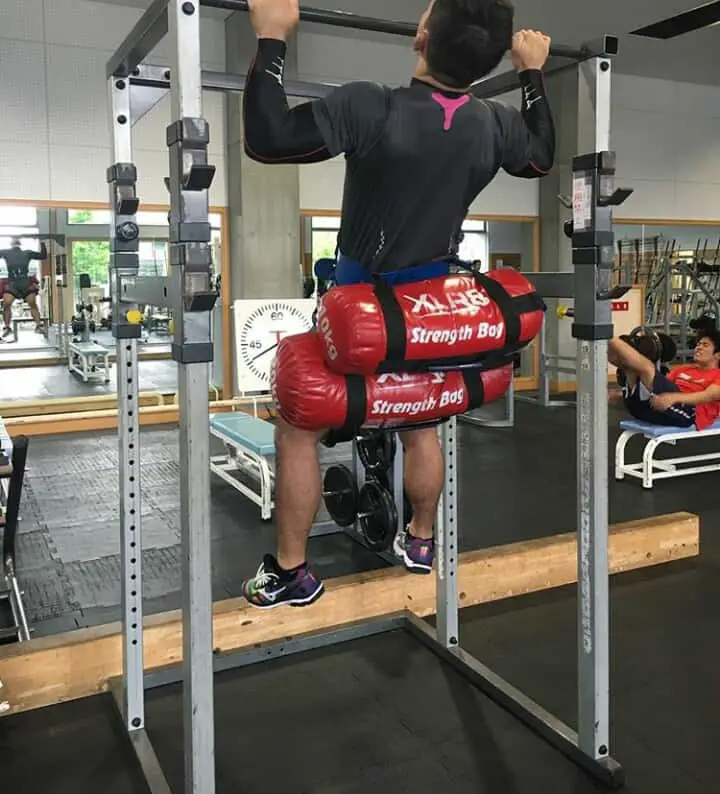
Is strength important in Judo? Yes, strength is important in Judo as Judo is a very physical sport and the movements require a combination of techniques strength and speed to be performed against a resisting opponent. Strength is acknowledged as an important part of Judo which is why there are weight classes and athletes are separated by gender.
The following strength standards are guidelines on the amount of strength Judo athletes should strive to achieve. The exercises chosen are core strength exercises that test leg, back, arm and shoulder strength. The weights are 1 rep maxes.
A 60kg male elite level Judoka should be able to press 125 pounds, bench press 205 pounds, power clean 200 pounds, squat 275 pounds and deadlift 340 pounds
A 90kg male elite level Judoka should be able to press 170 pounds, bench press 290 pounds, power clean 280 pounds, squat 385 pounds and deadlift 455 pounds
A 52kg female elite level Judoka should be able to press 75 pounds, bench press 110 pounds, power clean 105 pounds, squat 150 pounds and deadlift 200 pounds
A 70kg female elite level Judoka should be able to press 95 pounds, bench press 140 pounds, power clean 135 pounds, squat 190 pounds and deadlift 250 pounds
Is Judo Good For Health?
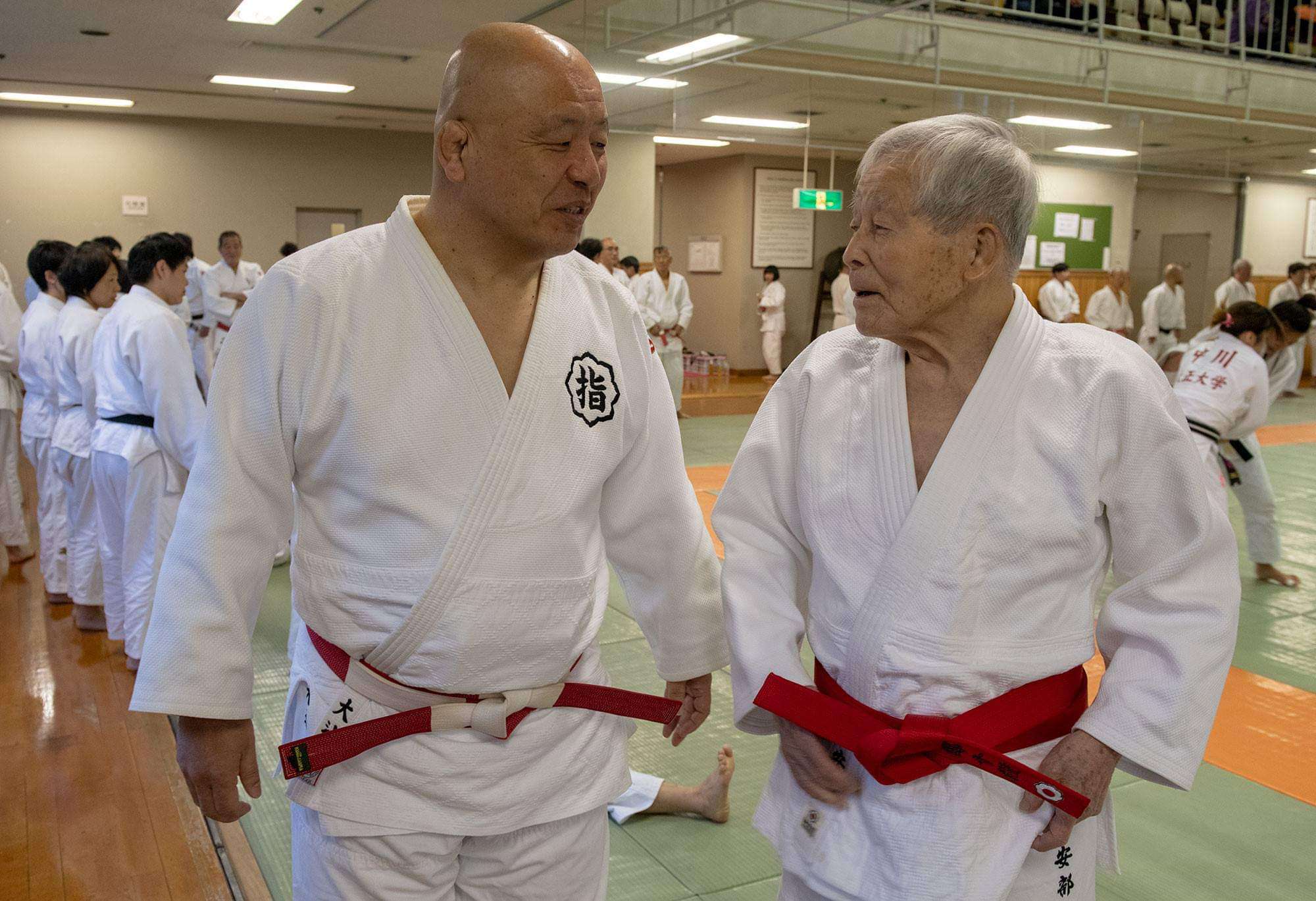
Is Judo good for health? Yes, Judo is good for your health, I know many 70 and even 80 year olds who are still practicing Judo. Judo is a great form of exercise which can help you build muscle, lose weight and increase your flexibility. Judo is a great way to meet people and make friends which is great for your emotional health.
Judo helps people develop strong muscles, high level of cardio, reduces fat and reduces cholesterol. People who train in judo are less likely to suffer from heart ailments and be an unhealthy weight.
Judo can help people improve their concentration as it forces people to follow detailed instructions with lots of steps. These instructions take a lot of brain power to remember and perform. Studies have shown that both adults and children who suffer from ADHD see an improvement in their concentration levels and overall mental clarity after training in Judo.
Judo is a great outlet for excess energy and frustration. It allows that energy and frustration to be channeled into a positive avenue. Powers, a Judo researcher noted “it’s rare for Judokas to get into fights. Because Judo is a sport that builds discipline and respect of others. Judokas know that aggressive behavior is not the proper solution to conflict and their judo techniques are for their classes.”
Is Judo Good In A Street Fight?
Is Judo good in a street fight? Yes, Judo is good in a street fight. You can use Judo to win a fight without injuring your opponent. Judo allows you to incapacitate your attacker by restricting their movement via pins and throws while also allowing you to end the fight through submissions such as chokes that put your attacker unconscious but don’t cause injuries.
Striking arts like muay thai and boxing force you to hurt someone to win a fight. Many people have been killed by being knocked out and then crashing their head onto concrete.
Here is a video of UFC legend Donald Cerrone talking about the time him and his friend got into a street fight with a Judo specialist
Is Judo Good For Self Defense?
Is Judo good for self defense? Yes, Judo is good for self defense. A strong Judo throw can easily knockout an attacker or seriously injure them particularly if the the throw takes place on a hard surface such as concrete. Judo also teaches effective pins and submissions which can be used to control, maim and even kill an attacker in a self defense scenario.
To win a fight you must establish control over your attacker. Judo teaches you how to establish total control over someone without taking damage. Judo teaches shows you how to quickly finish a fight through a powerful throw which can knock your attacker unconscious or through submissions which can break a persons arm (Ude Hishigi Juji Gatame) or kill them by choking them (Shime waza).
Conclusion
Judo is a grappling based martial art which will teach you how to dominate your opponent through the use of throws, pins and submission holds. These skills can be used to compete in Judo competitions or to defend yourself in a self defense situation. Judo is a great sport that can improve your health through helping you gain muscle, lose weight and increase your flexibility. Judo also has many mental benefits and is a great way to meet new people and form new friendships.
